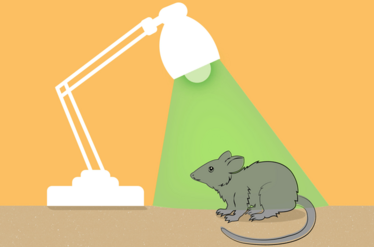Green Light for Pain Relief
LEDs are everywhere – and now they may be used to treat chronic pain
Despite chronic pain affecting approximately one third of the adult population in the US, the number of treatment options has remained relatively stagnant for decades. The Translational Scientist previously addressed the challenging nature of the search for new analgesics – and our experts urged other researchers to join the quest for novel therapeutic options (1). Now, a team at the University of Arizona has risen to the challenge and shown that light therapy could have uses beyond treating depression, jaundice, and skin conditions.

The researchers bathed rats under LED light at various wavelengths in the visible spectrum for 8 hours a day and compared their tolerance to neuropathic pain. Rats under 525 nm (green light) exhibited significant long-lasting antinociception (2).
To probe the mechanism, rats were fitted with opaque contact lenses and exposed to green light, or fitted with green contact lenses and exposed to room light; in the former, antinociception was prevented, but in the latter antinociception was exhibited, strongly indicating the role of the visual system.
More clinical work will be necessary to assess the potential of green LED therapy in the management of acute and chronic pain – but the lack of apparent side-effects, coupled with the low cost and wide availability of LEDs, sounds like a compelling treatment option for millions of sufferers worldwide. Perhaps equally importantly, the work shows that non-pharmacological approaches do exist and are worth seeking out...
- C Barker, “The Problem With Pain”, The Translational Scientist, 3, 18–27 (2016). Available at: bit.ly/2lpYMN7.
- MM Ibrahim et al., “Long-lasting antinociceptive effects of green light in acute and chronic pain in rats”, Pain, 158, 347-360 (2017). PMID: 28092651.
My fascination with science, gaming, and writing led to my studying biology at university, while simultaneously working as an online games journalist. After university, I travelled across Europe, working on a novel and developing a game, before finding my way to Texere. As Associate Editor, I’m evolving my loves of science and writing, while continuing to pursue my passion for gaming and creative writing in a personal capacity.















